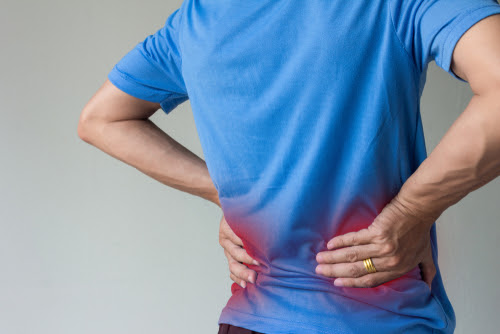Back Stiffness. Is It All in Your Head, or Is There More?
The theme for this week …
A common issue that might be holding you back from being more active is a stiff back. Although a stiff back can be linked to many medical conditions, a stiff back can also be related to what’s happened to you in life. To the traditional medical community, these causes are harder to understand and relieve. Read on …
Back stiffness … is it real, or all in your head?
Does this sound familiar? Sometimes you feel like your back is just too stiff. After some moving around to warm-up and stretch the stiffness often goes away. When it doesn’t go away, what else can you do?
Evaluating research and its relevance
In researching this topic I came across the study, “Feeling stiffness in the back: a protective perceptual inference in chronic back pain”. The study on back stiffness seems to debunk the concept of tight muscles really being tight and ends with an assertion that back stiffness is essentially an over sensitivity to the stress on the spinal muscles.
Is it really? We have difference of opinion on the study.
What’s missing from the research methodology?
Often the hardest puzzle to solve is when pieces are missing, not when they are merely wrong. This is especially true when trying to determine the cause of pain or stiffness.
In reading this study it occurred to me that there was an aspect of movement missing from their research — their testing only measured back muscle tightness of one plane of motion.
If we consider a 3D “x-y-z coordinate” scheme to represent the basic directions of human movement, it means the study was missing two dimensions — lateral and rotational movement.
Your back being stiff may indicate that rotation or side-bending is restricted. That is a very real reason!
Being told you’re just too sensitive!
Regardless of the study findings, if you feel your back is stiff, it’s affecting your ability to be active. Your medical professional may suggest a round of physical therapy or yoga. Maybe you’ve already tried this, and it didn’t help. Now what?
Different assessments for different solutions
Over the years we have discovered that your movement tells the story of your movement restrictions, if you let it.
Bridging® incorporates a systematic multi-directional process of assessing the most foundational movements your body can have.
The injuries, illnesses, and early life events are easily revealed when we look at the basics. Once revealed, the movement issues can be quickly reset, leaving you more nimble to take on the day.
Insight of the Week from Cara
Imagine being 22 years old with your back always feeling stiff. What will it feel like when you’re 40?
You figure you need to stretch and strengthen and maybe it will feel better. After several years the stiffness hasn’t changed. Maybe you just need to do more? Or live with it?
This is the type of story we hear so often!
What else do we look at to figure out your back stiffness?
The Bridging® assessment process includes a series of passive movement assessments with you:
- Standing
- Sitting
- On your back
- On your stomach
- And sometimes, on your side
Using a process of elimination, we observe where your core moves and where it doesn’t. This creates a surprisingly accurate picture of how you function and when you experience limitations.
For back stiffness, these are common causes
Another key component to the Bridging® process is to dig into your history of injuries.
We’ve found the following events from our clients’ past often relate to back stiffness:
- Being breech or the top twin when in utero
- Bicycle falls
- Auto accidents with significant impact or sudden stops
- Sports injuries, especially wrestling, skiing, and basketball
- Slips and falls impacting your back
Targeted problem-solving and fast solutions
Clients find Bridging’s targeted approach to problem-solving uniquely reveals the specific issues causing their stiffness.
Even better than finding a cause is the solution — gentle, rocking, and stretch-based muscle resetting during Bridging®, which is very relaxing.

